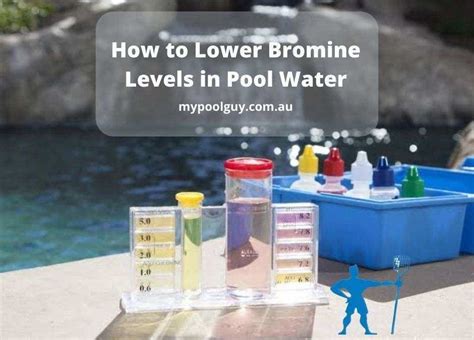Pool Bromine Levels: How to Get Them Right
Maintaining the perfect bromine level in your pool is crucial for keeping it clean, clear, and safe for swimming. Unlike chlorine, bromine is less susceptible to sunlight degradation, making it a popular choice, especially for hot tubs and pools with heavy use. However, getting the bromine level just right requires understanding and consistent monitoring. This guide will walk you through everything you need to know about maintaining optimal bromine levels in your pool.
What is the Ideal Bromine Level for a Swimming Pool?
The ideal free bromine level for your pool should be between 3-5 ppm (parts per million). This range ensures effective sanitation while minimizing the risk of irritation to swimmers' eyes and skin. Levels below 3 ppm are insufficient for proper disinfection, while levels above 5 ppm can be irritating and even damaging to pool surfaces.
How to Test Your Pool's Bromine Level?
Testing your pool's bromine level regularly is essential for maintaining its cleanliness and safety. You can use a test strip, a liquid test kit, or a digital pool tester. Each method provides a reading of the free bromine level, allowing you to adjust accordingly. Always follow the manufacturer's instructions for your chosen testing method.
What if my bromine level is too low?
If your bromine level is below 3 ppm, you'll need to add more bromine to your pool. The amount needed will depend on the size of your pool and the current level. You can add bromine in the form of granules, tablets, or liquid. Always follow the product instructions carefully. After adding bromine, retest your pool water in a few hours to ensure the level has increased to the desired range.
What if my bromine level is too high?
High bromine levels (above 5 ppm) can cause irritation and damage to pool surfaces. To lower the level, you can add fresh water to dilute the concentration. Consider partially draining and refilling your pool if the level is significantly high. You can also use a bromine reducing agent to neutralize excess bromine. Always follow the instructions provided with any water treatment chemicals you use.
How Often Should I Test My Pool's Bromine Level?
Regular testing is key to maintaining proper bromine levels. It is recommended to test your pool's bromine level at least twice a week, or more frequently during periods of heavy use or high temperatures.
What Factors Affect Bromine Levels?
Several factors can influence your pool's bromine levels:
- Sunlight: Sunlight degrades bromine, so pools exposed to prolonged sunlight may require more frequent additions.
- Bather Load: Heavily used pools require more bromine to combat the introduction of contaminants from swimmers.
- Temperature: Higher water temperatures increase bromine consumption.
- pH Level: Maintaining a proper pH level (7.2-7.8) is crucial for bromine effectiveness. An imbalanced pH can render bromine less effective.
What are the signs of low bromine levels?
Low bromine levels can manifest in several ways, including:
- Cloudy water: Indicates a lack of sufficient sanitizer to keep the water clean.
- Unpleasant odor: A musty or foul smell may indicate bacterial growth due to inadequate disinfection.
- Algae growth: Low sanitizer levels allow algae to thrive.
What are the signs of high bromine levels?
High bromine levels can cause:
- Eye and skin irritation: Swimmers may experience burning eyes or skin irritation.
- Damage to pool equipment: High bromine concentrations can damage pool surfaces and equipment over time.
How to Maintain Consistent Bromine Levels?
Maintaining consistent bromine levels involves a combination of regular testing, proper chemical additions, and a well-maintained pool filtration system. A properly functioning filter removes debris and contaminants, reducing the workload on your sanitizer.
By following these guidelines, you can keep your pool sparkling clean and safe for everyone to enjoy. Remember, consistent monitoring and appropriate adjustments are essential for maintaining the perfect bromine balance. Always consult with a pool professional if you have any questions or concerns.

